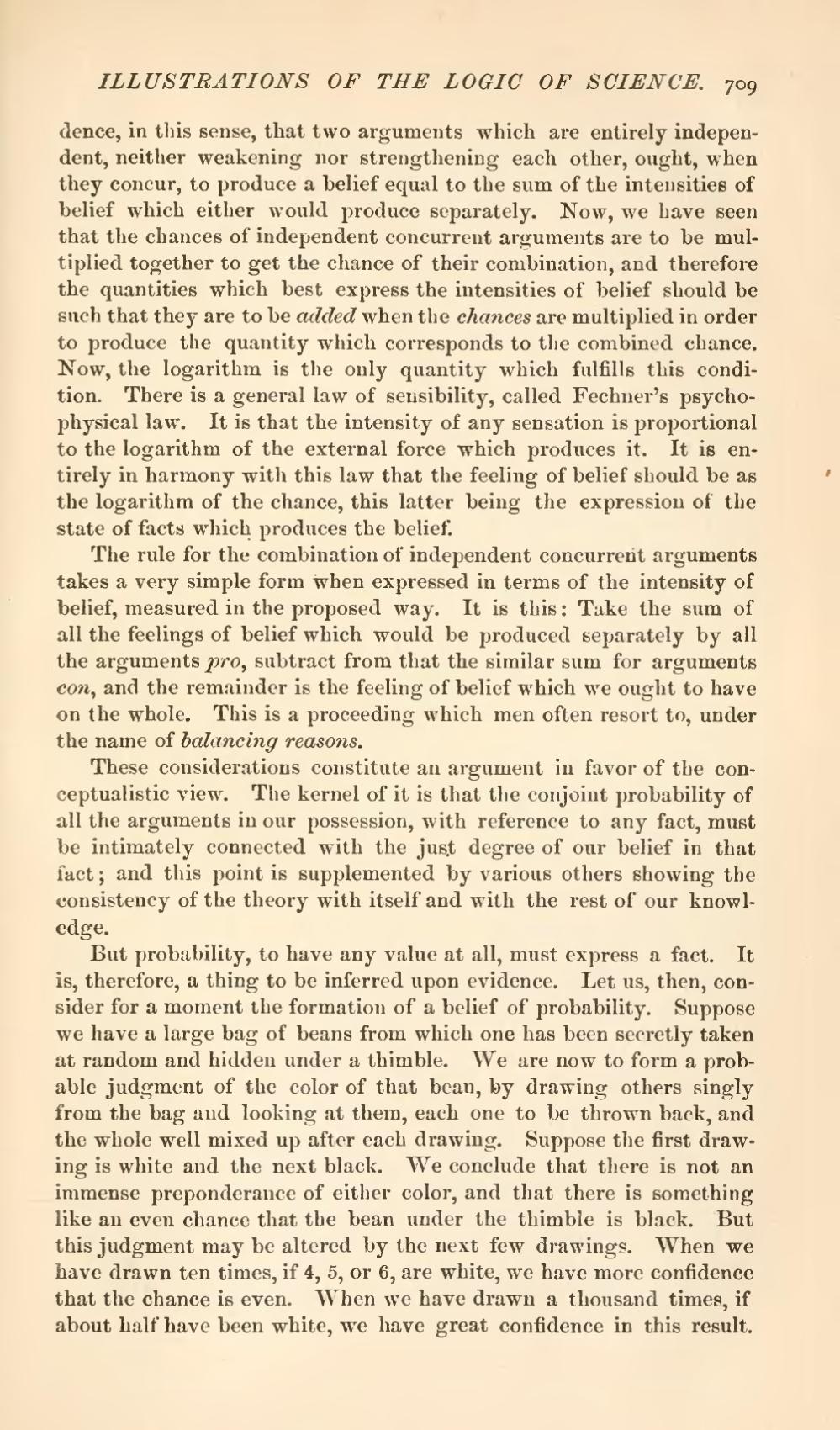dence, in this sense, that two arguments which are entirely independent, neither weakening nor strengthening each other, ought, when they concur, to produce a belief equal to the sum of the intensities of belief which either would produce separately. Now, we have seen that the chances of independent concurrent arguments are to be multiplied together to get the chance of their combination, and therefore the quantities which best express the intensities of belief should be such that they are to be added when the chances are multiplied in order to produce the quantity which corresponds to the combined chance. Now, the logarithm is the only quantity which fulfills this condition. There is a general law of sensibility, called Fechner's psychophysical law. It is that the intensity of any sensation is proportional to the logarithm of the external force which produces it. It is entirely in harmony with this law that the feeling of belief should be as the logarithm of the chance, this latter being the expression of the state of facts which produces the belief.
The rule for the combination of independent concurrent arguments takes a very simple form when expressed in terms of the intensity of belief, measured in the proposed way. It is this: Take the sum of all the feelings of belief which would be produced separately by all the arguments pro, subtract from that the similar sum for arguments con, and the remainder is the feeling of belief which we ought to have on the whole. This is a proceeding which men often resort to, under the name of balancing reasons.
These considerations constitute an argument in favor of the conceptualistic view. The kernel of it is that the conjoint probability of all the arguments in our possession, with reference to any fact, must be intimately connected with the just degree of our belief in that fact; and this point is supplemented by various others showing the consistency of the theory with itself and with the rest of our knowledge.
But probability, to have any value at all, must express a fact. It is, therefore, a thing to be inferred upon evidence. Let us, then, consider for a moment the formation of a belief of probability. Suppose we have a large bag of beans from which one has been secretly taken at random and hidden under a thimble. We are now to form a probable judgment of the color of that bean, by drawing others singly from the bag and looking at them, each one to be thrown back, and the whole well mixed up after each drawing. Suppose the first drawing is white and the next black. We conclude that there is not an immense preponderance of either color, and that there is something like an even chance that the bean under the thimble is black. But this judgment may be altered by the next few drawings. When we have drawn ten times, if 4, 5, or 6, are white, we have more confidence that the chance is even. When we have drawn a thousand times, if about half have been white, we have great confidence in this result.

